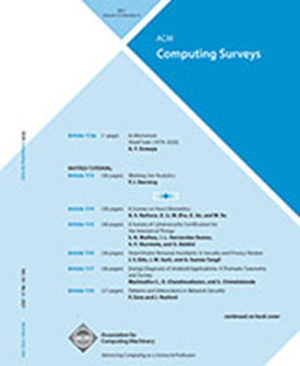基于激光雷达的自动驾驶位置识别研究进展
IF 28
1区 计算机科学
Q1 COMPUTER SCIENCE, THEORY & METHODS
引用次数: 0
摘要
激光雷达由于测量距离远、3D信息丰富、恶劣环境下的稳定性等优点,在自动驾驶领域得到了广泛的应用。位置识别(PR)使车辆能够识别以前访问过的位置,尽管外观、天气和视点存在变化,甚至可以在先前的地图中确定其全球位置。这种能力对于自动驾驶的精确定位至关重要。因此,基于激光雷达的位置识别(LPR)已成为机器人领域的研究热点。然而,现有的研究主要集中在视觉位置识别(VPR)方面,对视觉位置识别的系统研究还存在空白。本文通过提供LPR方法的全面回顾来弥补这一差距,从而促进和鼓励进一步的研究。我们首先探讨公关与自动驾驶组件之间的关系。然后,我们深入研究了LPR的问题表述、挑战以及与以往调查的关系。随后,我们对相关研究进行了深入的回顾,提供了详细的分类、优缺点和架构。最后,我们总结了现有的数据集和评估指标,并展望了未来的发展方向。本文可以为进入位置识别领域的新手提供有价值的指导。我们计划在https://github.com/ShiPC-AI/LPR-Survey上维护一个最新的项目。本文章由计算机程序翻译,如有差异,请以英文原文为准。
LiDAR-Based Place Recognition For Autonomous Driving: A Survey
LiDAR has gained popularity in autonomous driving due to advantages like long measurement distance, rich 3D information, and stability in harsh environments. Place Recognition (PR) enables vehicles to identify previously visited locations despite variations in appearance, weather, and viewpoints, even determining their global location within prior maps. This capability is crucial for accurate localization in autonomous driving. Consequently, LiDAR-based Place Recognition (LPR) has emerged as a research hotspot in robotics. However, existing reviews predominantly concentrate on Visual Place Recognition (VPR), leaving a gap in systematic reviews on LPR. This paper bridges this gap by providing a comprehensive review of LPR methods, thus facilitating and encouraging further research. We commence by exploring the relationship between PR and autonomous driving components. Then, we delve into the problem formulation of LPR, challenges, and relations to previous surveys. Subsequently, we conduct an in-depth review of related research, which offers detailed classifications, strengths and weaknesses, and architectures. Finally, we summarize existing datasets and evaluation metrics and envision promising future directions. This paper can serve as a valuable tutorial for newcomers entering the field of place recognition. We plan to maintain an up-to-date project on https://github.com/ShiPC-AI/LPR-Survey.
求助全文
通过发布文献求助,成功后即可免费获取论文全文。
去求助
来源期刊

ACM Computing Surveys
工程技术-计算机:理论方法
CiteScore
33.20
自引率
0.60%
发文量
372
审稿时长
12 months
期刊介绍:
ACM Computing Surveys is an academic journal that focuses on publishing surveys and tutorials on various areas of computing research and practice. The journal aims to provide comprehensive and easily understandable articles that guide readers through the literature and help them understand topics outside their specialties. In terms of impact, CSUR has a high reputation with a 2022 Impact Factor of 16.6. It is ranked 3rd out of 111 journals in the field of Computer Science Theory & Methods.
ACM Computing Surveys is indexed and abstracted in various services, including AI2 Semantic Scholar, Baidu, Clarivate/ISI: JCR, CNKI, DeepDyve, DTU, EBSCO: EDS/HOST, and IET Inspec, among others.
 求助内容:
求助内容: 应助结果提醒方式:
应助结果提醒方式:


